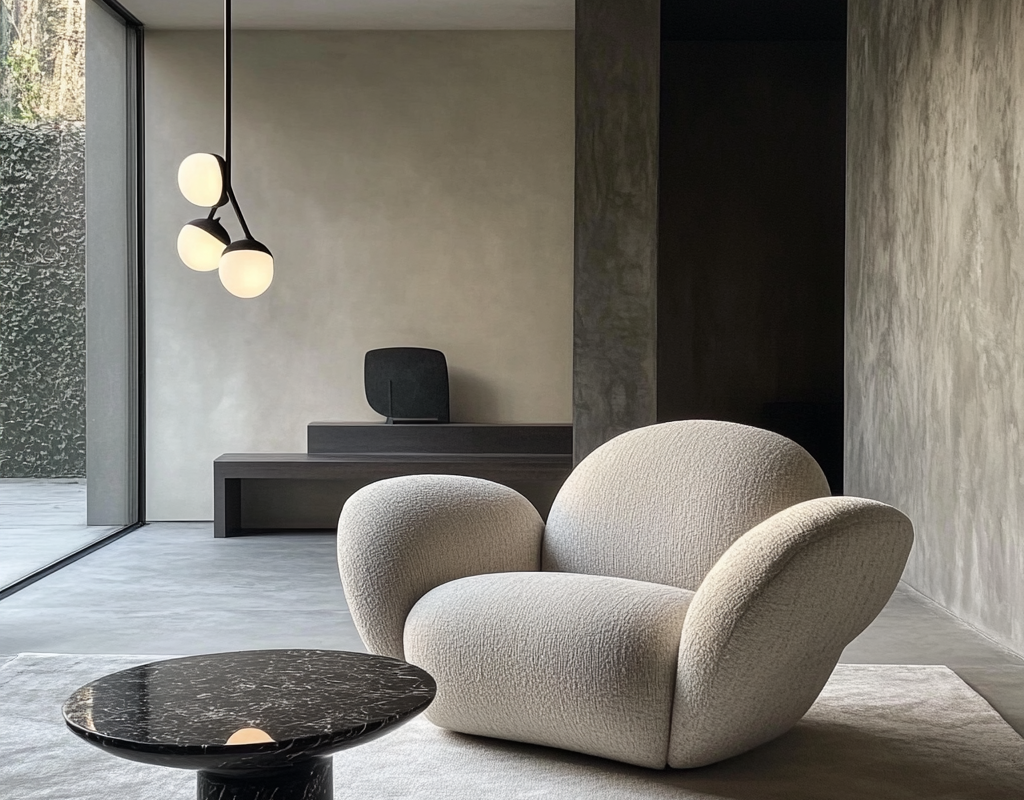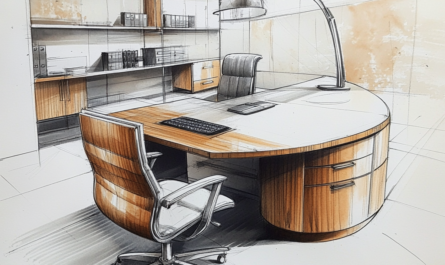The modern rhythm of life requires maximum convenience and comfort in everyday surroundings. For many people, home is a place of relaxation, recuperation and focus on important matters. However, too much furniture, unnecessary decor and unnecessary details can create a feeling of clutter, preventing complete relaxation. That is why the popularity of the functional style in interior design is rapidly growing.
.Principles of functional style in organizing space
The basic principle of functional style is optimal use of every centimeter without overloading the interior with unnecessary elements. The space should be comfortable, logical and visually clean. It is important to avoid chaos, clutter of furniture and excessive decor so that the house remains fresh, spacious and light.
Minimalism in design does not mean a boring and faceless space, but rather the ability to create a comfortable atmosphere with the help of laconic solutions. The functional interior uses thoughtful storage systems, multifunctional furniture, built-in appliances and ergonomic elements. An important role is played by proper lighting, which helps to zone the room and emphasize its geometry. The goal of this style is to create a balance between convenience, aesthetics and rational use of space..
Another key feature is simplicity of forms and materials. In such an interior there is no place for decorative excesses, complex patterns and heavy textures. In priority – natural materials, neutral shades and lightweight designs, which allow you to maintain a feeling of freedom and spaciousness.
Optimization of living space: practical solutions
When organizing space in a functional style, it is important to consider not only the appearance of the room, but also its practical use. Here are a few key techniques to help you make the most of your space:
- Competent zoning. Dividing a room into functional zones without overloading the space is one of the foundations of a successful interior. Use sliding partitions, glass structures or furniture that performs several functions at once.
- Multifunctional furniture. Folding beds, tables with additional sections, transformable sofas – all this allows you to save space without sacrificing comfort.
- Compact storage systems. Built-in wardrobes, modules under the bed, hanging shelves and niches help maintain order and use every corner of the house.
- Minimizing decor. Instead of many small decorations, it is better to use functional elements, such as designer lamps or interesting wall textures.
- Optimizing your kitchen space. Usage corner cabinets, hidden storage systems and drawers helps organize a convenient place for cooking and storing dishes.
By applying these principles, you can create an interior that is not only stylish, but also as comfortable as possible for life.
Lighting as a key element of a functional interior
Lighting plays one of the most important roles in a functional style, helping not only to create a comfortable atmosphere, but also to properly zone the space. Important to use multi-level approachwhich includes basic, task and decorative lighting.
The main light should be soft and uniformso as not to overload the interior. It’s best to choose recessed lights, dimmable pendant lamps or track systems. They create a feeling of spaciousness and make the space more airy.
Working lighting is required for certain areas: kitchens, workplaces, recreation areas. Suitable here table lamps, built-in LED panels or spotlights.
Decorative light helps to make the interior lively and cozy. LED strips, floor lamps, wall sconces and accent lighting for furniture help create a warm, no-frills atmosphere.
Properly designed lighting allows change the perception of space, make it more voluminous and comfortable, and also emphasizes geometry and interior style.
Materials and color solutions in a functional interior
A functional interior is based on simplicity, so materials should be natural, durable and easy to care for. Most Popular wood, metal, glass, concrete and textiles. By combining them, you can achieve interesting combinations while maintaining a minimalistic and clean space.
As for the color scheme, functional style is preferred calm, neutral shades: white, gray, beige, graphite, sand. However, this does not mean that the interior should be completely monochrome – bright accents are acceptable, but in limited quantities. For example, colored pillows, paintings or geometric patterns on one of the walls will help add individuality, but will not upset the overall balance.
It is important that the color palette contributes to the feeling of comfort and spaciousness, so you should avoid too saturated, contrasting solutions that can overload the interior.
Mistakes when creating a functional interior and how to avoid them
Despite its apparent simplicity, creating a functional interior requires a careful approach. One of the common mistakes is excessive emptinesswhen the space seems cold and lifeless. It is important not only to remove unnecessary items, but also to create a cozy atmosphere with the help of thoughtful details: textiles, lighting, natural materials.
Another common mistake is insufficient storage space. If you don’t provide convenient systems for organizing space, even the most minimalist interior will quickly turn into a chaotic pile of things. The solution is to use hidden shelves, built-in wardrobes, furniture with additional storage sections.
Also worth avoiding overly monochrome designwhen the room becomes faceless. Addition textured elements, geometry, interesting combinations of materials will help maintain style and individuality.
Functional style is not just minimalism, but a way to create a comfortable and harmonious space, in which every detail has its own meaning. It is suitable for both small apartments, where it is important to save space, and for spacious houses, where order and lightness are needed. The main idea is combining aesthetics and convenienceso that the living space becomes not only beautiful, but also truly comfortable for life.
There is nothing superfluous in such an interior: only comfortable, ergonomic and thoughtful solutions that help to effectively use every meter of living space. Harmony, order and convenience are the main principles that underlie this direction
To achieve this effect, it is important correctly zone the room, use multifunctional furniture, implement thoughtful storage systems and choose natural materials. The main thing is not to overload the interior, leaving enough free space for breathing.
With the right approach, a functional style will help create spacious, comfortable and cozy housing, in which every element works for comfort and harmony.
Use warm shades, add textiles (pillows, curtains, blankets), live plants and soft lighting. This will help create a cozy atmosphere without overcrowding the space.
Provide hidden storage systems: sliding wardrobes, niches, pull-out sections in furniture. The more organized storage space you have, the easier it is to stay organized.


